Typhus 1941-1944: bacteriological warfare
Today, in the era of a pandemic and the battle of Western and domestic vaccines, it is worth remembering that relatively recently (in historical terms) epidemics were used in wars as weapon mass destruction. Especially at the stage when there were no drugs for infectious diseases, and Western and domestic scientists, just like now, on the threshold of World War II, were still fighting and fiercely competing for primacy in the invention of effective vaccines.
In our cycle about losses in the Great Patriotic War in the previous parts of the review ("Aesopian language of loss: the pan-European empire VS Russia" и "Losses of Russia / USSR in the war against fascism: language of numbers" it was stated that Europe of those years (in a thirst for superiority and reprisals against the barbaric Slavs in the East) united against a common enemy - Russia.
In the third part Civilian casualties in 1941-1945: fakes and facts documents and figures were considered about the huge and inexplicable by nothing other than the inhuman cruelty and atrocities of punishers, casualties among the civilian population of our country in that war.
However, in the course of studying the topic of the methods of deliberate extermination of the civilian population of Russia / USSR by the Nazis, among other tortures and punitive inventions of the Nazis, we drew attention to the evidence and documents published by the Extraordinary State Commission for Investigation of the Crimes of the Nazis that the Nazis deliberately infected the inhabitants of Russia / USSR with typhus (and a number of other dangerous and contagious infections).
Not much is written about this. Epidemiologists and doctors tend to view such versions, most likely, as conspiracy theories. The military are silent, perhaps because of the secrecy labels that have not been removed so far. But at the Nyurberg trial, the ChGK documents on this topic were heard. And the evidence for the "accident" of such a scale of typhus epidemic, as in the Great Patriotic War, is somehow too much.
So we decided to try to figure out whether the Germans really used the typhus infection for military purposes in 1941-1944, that is, as a biological weapon against Russia? Did the fascists have an antidote, medicine or vaccine for this infection? And also who and how promptly neutralized this biological weapon of the fascists then in our Russia?
Но обо всем по порядку.
At first a little stories.
Typhus against the new Russia
Let us recall that in the First World War it was the infection with typhus that, among other factors, became a very effective weapon of the West against Russia. According to various sources, about 30 million Russians then had this infection. And over 3 million of them have died. Typhus was especially rampant at that time in war zones.
Accident? Maybe.
Typhus in the young state of the Soviets at the beginning of the twentieth century was then also considered as a kind of weapon of the West to fight the revolution and communism. Moreover, the leader of the proletariat in December 1919 pointed out the incredible effectiveness of this murderous infection:
In the territory controlled by the Soviet government, the typhus epidemic was then unprecedented and widespread. They brought the disease to Russia from abroad, from Europe, including through Ukraine, from where various private speculators smuggled food, bread, flour, cereals, and with them typhus. The incubation period of typhus is at least 5 days, and during this time the patient could have gone very far into Russia. It seems that this was the calculation of the West.
In Moscow, then almost all doctors became infected, half died out, especially the elderly and with a weak heart. The population of the young Land of Soviets was left alone with typhus imported from the West. Mortality then from this scourge was about 20% (17,3%).
Between the two world wars, typhus subsided slightly, but did not stop.
However, typhus acquired a special scale on the territory of the USSR with the beginning of the Great Patriotic War.
European contagion
Typhus then again came to us from the West - from Europe. The Nazis infected them with almost 70% of the entire civilian population, which then ended up in the territory temporarily occupied by the Nazis and became, in fact, "live bombs" both for the rest of the country and for the soldiers of the Red Army.
Perhaps the Germans needed to maintain a constant focus of infection? To spread it through moving carriers to the East to the rear of the Russian troops? And reduce the population and army of Russia and in this way?
Indeed, in the rest of the USSR, railway stations are becoming one of the sources of the epidemic. Over 50% of all reported cases of typhus were imported. Passengers arriving in the rear of the trains suffered massively from typhoid lice and spread the infection inland to the East. And the local authorities then could not ensure the sanitization of all arrivals there.
When the Red Army cleared the occupiers of Ukraine and Belarus, it turned out that in comparison with 1940 in Ukraine, the incidence of typhus in the Germans increased 28 times, and among Belarusians 44 times.
A real nightmare was happening in the Nazi concentration camps. Due to the disgusting conditions of detention and unsanitary conditions, thousands of prisoners died of typhus.
But in fairness, it should be noted that many sources also indicate that often the cause of infection in those years was not fleas and flies at all, but atrocious experiments by Nazi executioners, who specially infected prisoners and villagers.
In those days, after all, different countries were racing to find a cure and a vaccine for typhus. Here are the Nazis and experimented on people. During the war, the Germans did not need any special permits for the use of new drugs or vaccines, nor did they need their certification. Whatever they wanted, they could try out on forced Soviet citizens, who then turned into the guinea pigs of the Nazis.
A special calculation was that the Russian army, liberating its lands from occupation, would inevitably become infected with typhus and weaken.
This is why the Germans really needed a population of 70 percent typhoid-infected civilians on the western outskirts of Russia. Infected Soviet citizens were supposed to become a living buffer and protection for a united Europe. How could this be an accident? No, it was a well-organized and planned sabotage.
Forced typhoid infection certificates
Compilation reports of the Extraordinary State Commission on the atrocities of the German fascist invaders and their accomplices (1946) contains acts, testimonies, statements, expert opinions, photographs, trophy documents and evidence that are formidable accusatory material against German murderers, stranglers of culture, civilization and progress.
And most importantly, these documents prove that it was a carefully worked out, well thought-out program of the German fascist state, which sought to destroy the Soviets and exterminate the Soviet people. Including this brutal plan included the infection of citizens of Russia / USSR with typhus.
Hitler, in his speech on January 30, 1942, cynically boasted to the German people of the destruction of Soviet cities and towns. He said:
Indeed, there were ruins. But another gift from Hitler awaited Soviet soldiers there - typhus in 70% of the concentration in the local population and even higher in the prisoners of the camps.
Let us quote some of the published evidence.
In the collection of documents for the Nuremberg trials (the trial of the fascists) there is a chapter "The extermination of Soviet people by the Nazis by infection with typhus."
(ChGK, pp. 183-193)
On March 19, 1944, the advancing units of the Red Army in the area of the town of Ozarichi, Polesie region, the Byelorussian SSR, found three concentration camps on the front line of the German defense, in which there were more than 33 thousand children, disabled women and old people ... Together with the exhausted and disabled population who in unsanitary conditions, they housed thousands of typhus patients in camps, specially removed from various temporarily occupied regions of the Byelorussian SSR. "
There is also a chapter in this collection on the deliberate infection of the local population. It is called "The deliberate spread of the epidemic of typhus among the Soviet population by the German fascist executioners."
In order to maintain a high percentage of the infected, the Germans specifically hunted for new patients. Thus, a resident of the village of Zabolotye M.B. Labeznikova, who was held in the camp, told the commission:
Instead of the separation and isolation recommended in epidemics, the Nazis, on the contrary, sought to mix the healthy with the infected.
O. A. Sheptunova from the village of Solodovoye said:
People did not always understand where and for what purpose they were taken. For example, P.S. Mitrakhovich, a resident of the village of Novo-Belitsa, testified:
And a resident of the town of Novogrudok, 3.P. Gavrilchik said:
A resident of the village of Pgantsy E. Dushevskaya testified:
The Nazis placed in camps at the front line of the defense not only the healthy and sick, transferred from the transfer points, but also specially imported Soviet citizens with typhus from hospitals and infirmaries to them.
Patient N.P. Tretyakova from the village of Zamoschany said:
G.S. Shirokov, a resident of the city of Zhlobin, gave the following testimony:
AND ABOUT. Romanenko told the commission:
Similar testimony was given to the commission by former prisoners of concentration camps, Soviet citizens: Zhdynovich D.G., Zaitseva O.A. Rusinovich Kh.T., Reshotko T.I., Anisimova M.T., Drobeza I.R., Novik L. K., Veros P. Ya., Kovalenko A.E., Bondarenko V.F., Davydenko M.V. and many others.
Thus, the deliberate export of typhoid patients by the Germans to the camp, in order to spread the typhus epidemic among the Soviet population, irrefutably proven numerous testimonies of Soviet citizens who were forcibly sent by the German authorities to concentration camps on the 5th, 7th, 8th, 9th day of typhoid fever.
Here are a number of documented cases of this kind, which, however, constitute an insignificant part of all the numerous recorded facts:
In concentration camps, they fell ill with typhus: Zemzhetskaya M.D. from s. Buda, Romanov I. from the village of Belitsa, Ventsov I. from the village. Zapolye, Belko P. from the village of Volosovichi, Poschen M.3. from the village. Piggland, Drozdova V.S. from the village of Komadovka, Yashchur A.M. from the village of Ivanishche, Patsay M.I. from the village of Gar, Daineko F.D. from the village of Pruzhilische, Kozlova T. from the village of Novosyolki, Shkutova FS from the village of Godinovichi, Gryzhkova A.S. from the village of Raduzha, Antonik E. from the village of Treltsy, Udot A. from the village of Zakerichi and many others.
The command of the German army specially sent its agents to the camps at the front line of defense, who were charged with monitoring the spread of the epidemic of typhus among the population, as well as among units of the Red Army. Pre-vaccinating these spies against typhus with a special vaccine.
The detained German agent of the reconnaissance group 308 F. Rastorguev said:
The task given to me by the head of Group 308 was as follows: to arrive at the camp located west of the village of Ozarichi, and be there, remaining unnoticed by the masses. I had to establish what the Red Army units would do with the civilian population when the camps were located in the Red Army units, where women and children would be sent, what would be done with the sick. After I complete the task given to me, I will have to return to the side of the Germans and report on the information I have collected. "
That is, the Germans were engaged in epidemiological reconnaissance in our rear and left special spy agents for this. It was necessary for them to understand the scale of the spread of the artificially formed typhus epidemic in Russia / USSR in the period after their retreat.
On the deliberate infection with typhus left by the Germans during the retreat of Russian territory, an official conclusion of the forensic medical examination of the Extraordinary State Commission was drawn up:
Deliberate spread of the epidemic of typhus among the peaceful Soviet population, imprisoned by the German troops in concentration camps near the front line of the defense, is also confirmed by the data of the forensic medical examination.
The forensic medical expert commission consisting of the army epidemiologist Lieutenant Colonel S.M. Yulaev, army forensic medical expert Major N.N. Alekseev and the head of the army pathological and anatomical laboratory Major V.M. Butyanina found that in order to infect Soviet people with typhus:
b) for a faster spread of typhus in the camps, the Germans practiced the transfer of typhus patients from one camp to another (data of an epidemiological anamnesis, clinic and serological studies for Nos. 2, 8, 10, 15, 16, 17 and others);
c) in cases where typhus patients refused to go to the camps, the German authorities used violence (interrogation protocols nos. 269, 270, 271, 272);
d) German invaders transferred typhus patients from hospitals and mixed them with a healthy population in the camps. This is confirmed by epidemiological anamnesis for Nos. 138, 139, 149, 166, 175, 180, 40, 49, 50 and survey protocol No. 273;
e) the infection of the Soviet population with typhus was carried out during the second half of February and the first half of March. "
After the liberation of the Ozarichi area of the Polesie region from the German invaders, from March 19 to March 31, 1944, the command of the Red Army units hospitalized 4 Soviet citizens, of which 052 children under the age of 13.
Based on the investigation of the special commission, the conclusion of the forensic medical examination, documentary materials, as well as on the basis of the investigation carried out by the member of the Extraordinary State Commission, Academician I.P. Trainin, the Extraordinary State Commission established that the creation of concentration camps at the front line of defense with the placement in them of healthy and typhus patients, the German authorities tried to deliberately spread the epidemic of typhus among the Soviet population and units of the Red Army, which is a gross violation of the laws and customs of warfare recognized by civilized peoples.
The Extraordinary State Commission considers the Hitlerite government, the high command of the German army, as well as the commander of the 9th Army, General tank Harpe troops, the commander of the 35th Army Corps, Infantry General Wiese, the commander of the 41st Panzer Corps, Lieutenant General Weidman, the commander of the 6th Infantry Division, Lieutenant General Grossman, the commander of the 31st Infantry Division, Major General Exner, the commander of the 296th Infantry Division, Lieutenant General Kulkhotmer, commander divisions of Major General Weisshaupt, commander of the 110th Infantry Division, Lieutenant General Richard, commander of the 35th Infantry Regiment Colonel von Kapf, Commander of the 34th Infantry Regiment Major Rogilain, Chief of Abertrupp 109, Ober Lieutenant Hirst.
All of them must bear severe responsibility for the crimes committed against the Soviet people.
Published in the newspaper "Izvestia" No. 103 dated April 30, 1944 on the basis of the Resolution of the Extraordinary State Commission dated April 29, 1944, Protocol No. 29. p.193 "
Typhus in the army
Hitler's plans partially worked. For the advancing Soviet army, typhus came first among the epidemic diseases in the front troops.
Some high-ranking military personnel of the Main Military Sanitary Directorate
The Red Army were confident of epidemiological sabotage and indicated that a bacteriological war was being waged against the USSR, including through the deliberate spread of typhus by the Nazis among civilians in the temporarily occupied territories.
For him (Hitler), the offensive of our troops could not be unexpected. The proximity of the camps to the front line forced the enemy to evacuate prisoners to the west, depriving the Red Army of a source of replenishment. However, this was not done, and it seemed to us impossible to consider it an accident ”.
Link
There was a bacteriological war. The Red Army occupied a number of settlements that were under temporary occupation. Among the civilian population there were massive cases of typhus. Contacts with the local population caused typhus in the army as well. If we take the number of diseases in February as 100%, then in March they were 555%, in April - 608%, in May - 378%.
During the counter-offensive near Moscow, the number of typhus patients in February, compared with January, increased 3 times, and in March - 5 times. After the end of the onset, the number of diseases quickly decreased by 2 times.
During the liquidation in March 1943 of the Rzhev-Vyazemsky bridgehead of the enemy, the number of diseases increased 10 times compared to February. This was facilitated by the fact that the epidemic of typhus was raging among the civilian population in the temporarily occupied territory. The reason for such a large increase in the incidence was the contact with the local population. As a result, the number of cases of typhus rose from 51% in February to 90% in March.
Ukrainian vaccine for fascists
How did the Germans themselves survive among the 70% infected population in the territories of Russia occupied by them?
It turns out that the Germans had a typhus vaccine. By the way, at that time, both the Americans and the Chinese already had a vaccine against this infection.
From the very beginning of the war, the Nazis already from July 1941 had the opportunity to vaccinate the soldiers of the Wehrmacht against typhus. It turned out that the Polish professor of German origin Rudolf Weigl, together with his Ukrainian colleagues and Ukrainian volunteers, produced it for the entire war in Ukraine in Lvov for the Germans.
Weigl invented his typhus vaccine before the war. But as soon as the Germans entered Lviv, the Weigl Institute for Typhus Research and Virology immediately took over the new Nazi rule and began to produce a typhus vaccine for the army of the Third Reich. So it was Ukraine that supplied German soldiers and officers with the typhus vaccine throughout the war.
Of course, the production method of the Weigl vaccine was complicated, since the lice for it (raw materials) had to be grown right on the body of human volunteers. At first, Weigl had about 1000 such Ukrainian volunteers.
And when the Reich at the end of 1941 needed even more doses of typhus vaccine, Weigl opened another, the second in Ukraine, a plant-institute for its production. To do this, then Weigl recruited another 1000 new Ukrainian donors, who, growing lice on their own bodies, fed them with their own blood. And all this for the production of the vaccine for the Reich. For this, all Weigl's employees and donors received benefits unheard of for those times in the then occupied Ukraine.
It turns out that, on the whole, thousands of Ukrainian donors, as well as doctors and medical staff, voluntarily forged the Germans' resistance to typhus throughout the war?
And what about Russia?
Let us recall that the USSR annexed Western Ukraine in 1939. And Weigl received an offer to work in Moscow, and there to produce his typhoid vaccine. But the Polish German refused. Later, the Nazis promised him the Nobel Prize for putting the vaccine on the conveyor belt for the Reich. True, then they will deceive, and the "Nobel" for his faithful service to Hitler still will not be given.
When, in connection with the offensive of the Red Army, the Germans evacuated both their Lviv plants for the production of vaccines against typhus to the West, Weigl would move to Poland. And then Warsaw will open its own production of typhus vaccine there under his leadership.
The attitude towards Weigl is controversial. On the one hand, a scientist-inventor, on the other, an accomplice of the fascists. History will judge. It is important for us that Ukraine throughout the war was a laboratory for the production of a kind of "antidote" for those fascists who set out to infect almost the entire USSR with typhus.
So, it was the very same Lvov vaccine of Weigl that became the salvation for the Wehrmacht from their own biological weapons on the Eastern Front.
Russian vaccine
Russian epidemiologists also did not sit idly by, but fought with all their might in domestic laboratories against the "invisible army" of the Wehrmacht. If it were not for these epidemiological fighters in white coats, then millions of Russians would not have lived to see Victory.
Of course, the fact that the Germans at the very beginning of the war were also waging a biological war with Russia / USSR was not announced to the people.
But the epidemic of typhus in the USSR was then prevented by our domestic scientists, who promptly created two Soviet anti-typhoid vaccines.
We repeat once again, by that time Germany, the United States and China already had a similar vaccine. But nobody was going to share it with the USSR then.
The causative agent of typhus - Rickettsia Provachek, was isolated independently in different years by the American scientist Ricketts and the Czech Provachek. The harmful bacteria killed both discoverers. And about 30 years after the identification of the pathogen, there were no vaccines for typhus. Difficulties were created by the unusual nature of the causative agent of typhus: it survived and multiplied only in the organisms of carriers: lice or rodents. There was no way to grow these typhus pathogens in an artificial environment in the laboratory at that time.
The sample of the Russian typhus vaccine presented in the hall of the Military Medical Museum was developed by Soviet scientists Maria Klimentievna Krontovskaya and Mikhail Mikhailovich Mayevsky, researchers at the Central Institute of Epidemiology and Microbiology.
M.K. Krontovskaya and M.M. Mayevsky managed to infect white mice with typhus through the respiratory tract. At the same time, rickettsia abundantly accumulated in the lungs of mice. The typhus vaccine began to be prepared from the lungs of infected mice crushed and treated with formalin.
Already in 1942, the production of a Russian vaccine against typhus was launched. The People's Commissariat for Health of the USSR recognized this remedy as effective and decided to use a new serum. This allowed for large-scale vaccination.
This vaccine quickly reached the front. The inoculation should be carried out subcutaneously and three times.
But this domestic typhus vaccine was not the only one in the USSR.
There was also a second group of developers.
At the same time, Perm scientists Aleksey Vasilyevich Pshenichnov and Boris Iosifovich Raikher invented their own method of producing a vaccine against typhus.
They designed a special “feeder” for lice. Human blood with rickettsia was poured into its lower part, insects were planted in the upper part, and a thin upper layer of skin removed from the corpse was stretched in the middle. The lice stuck to the epidermis and became infected, which is important, naturally. The bacteria were supposed to be no different from those that multiplied and caused disease outside the laboratory. In the future, lice could feed in the same feeders, which made it possible to keep them away from donor people.
In 1942, the Pshenichnov and Reicher vaccine was ready: scientists used a suspension of crushed lice larvae infected with rickettsia.
The Pshenichnov-Reicher vaccine was used to prevent typhus in the civilian population of the USSR.
Both Russian vaccines did not create one hundred percent immunity, but when they were used, the incidence decreased by three times, and the disease in the vaccinated was easier.
The widespread use of domestic vaccines in the USSR made it possible to prevent a typhus epidemic in the active army and in the rear, and also reduced the incidence rate by 4-6 times during the Great Patriotic War.
Epidemiological reconnaissance
In addition to vaccines, the epidemiological well-being of the troops during the Great Patriotic War was ensured by epidemiologists.
Already 7 months after the start of the war, on February 2, 1942, the People's Commissariat of Health approved a resolution "On measures to prevent epidemic diseases in the country and the Red Army." The decree provided for the following activities:
- Carrying out the arrangement of epidemiologists, bacteriologists, sanitary doctors in connection with the complicated epidemic situation.
- Guaranteeing universal immunization against acute intestinal infections in large settlements, as well as preparing immunization for conscripts of the population.
- Provision of timely diagnosis and rapid hospitalization of patients with epidemic diseases, the creation of mobile epidemiological units at district health departments and epidemiological departments, equipped with means for quick sanitization of people, clothing and property in epidemic foci.
- Strengthening attention and control over the presence of infectious diseases at major railway stations and during the evacuation stages.
- Was organized and received recognition of the sanitary and epidemiological reconnaissance "ahead of the troops."
Subsequently, military sanitary and epidemiological reconnaissance was carried out throughout the entire territory from the front line to the rear of the division by all medical personnel of units, units and formations (a sanitary instructor in a company, a paramedic in a battalion, a doctor in a regiment and division).
In May 1942, the position of deputy chief physician for epidemiological work was introduced in each polyclinic. And also organized the training of activists - sanitary inspectors, who conducted house-to-house rounds, sent all fever patients to hospital, disinfected foci of infectious diseases.
By the end of the war
In general, the hygienic and anti-epidemic institutions of the military medical service during the Great Patriotic War, according to far from complete data, examined 44 696 settlements, revealed 49 612 foci of typhus, 137 364 patients with typhus, of which 52 899 people were hospitalized in army and front-line hospitals.
By the beginning of the transition of our troops to the offensive on all fronts in 1944, the medical service of the Red Army had a powerful and orderly organization that made it possible to ensure anti-epidemic reconnaissance and epidemic protection of our troops.
In addition to the medical units of military units, at the medical battalions of rifle divisions, tank and cavalry corps, sanitary platoons were created, equipped with the necessary transport and a laboratory that made it possible to perform sanitary-chemical and hygienic analyzes.
Сonclusion
Whether or not Hitler organized a bacteriological war against the civilian population of the USSR is for experts to figure out.
But the facts of intentional infection of thousands and thousands of Russians with this dangerous infection are documented and do not cause doubts.
The typhus pandemic, which the Nazis dreamed of, during the Great Patriotic War in Russia was prevented solely through the prompt creation of its own domestic effective vaccines, as well as through the formation of epidemiological units in the troops.
In the next part, we will consider various versions of the enemy's losses in the Great Patriotic War.
To be continued ...
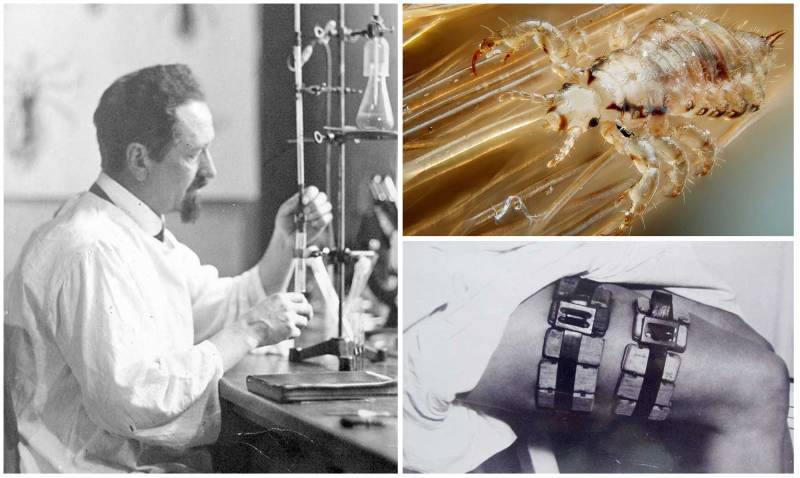
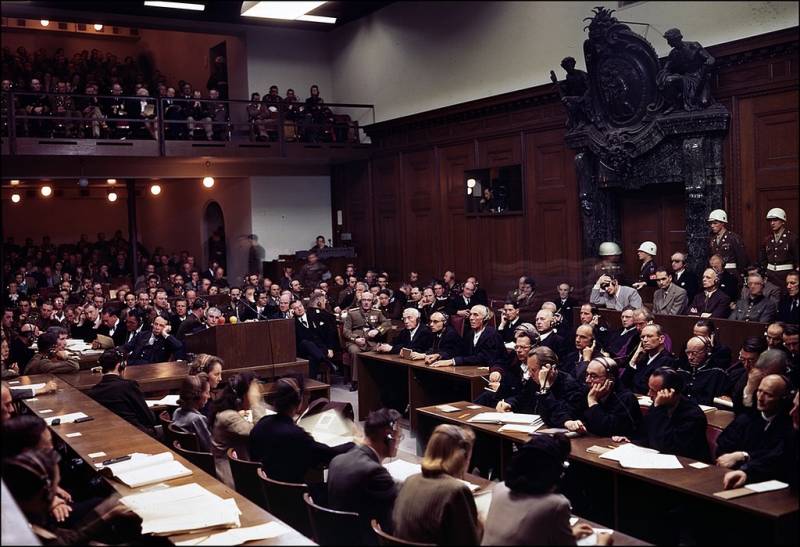
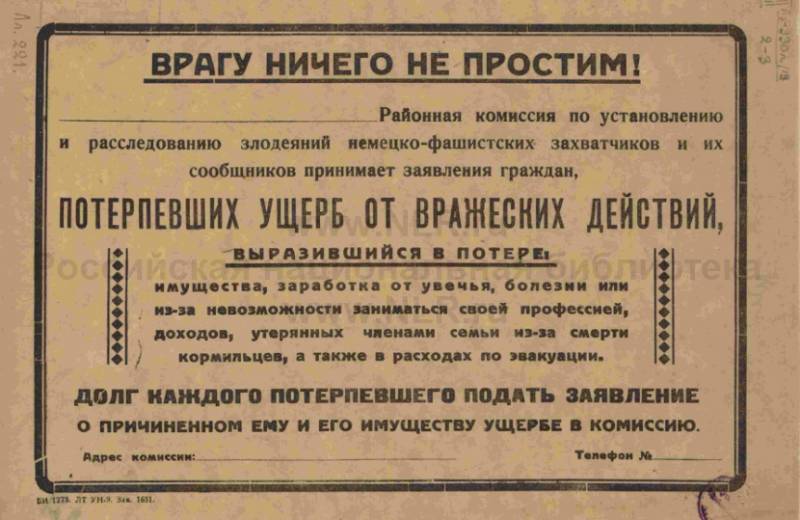
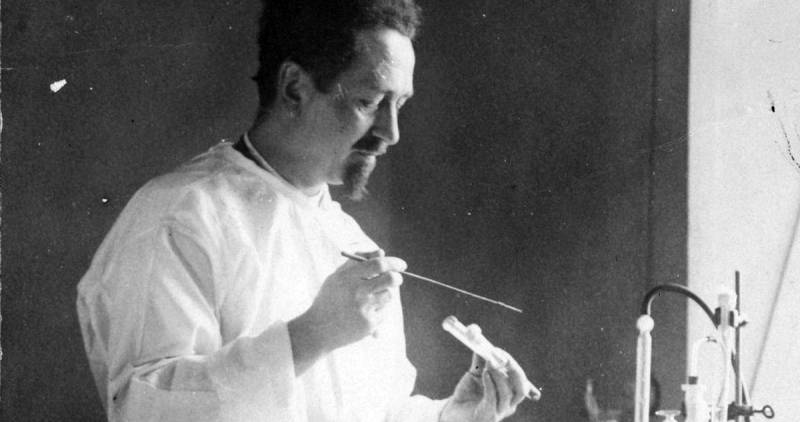
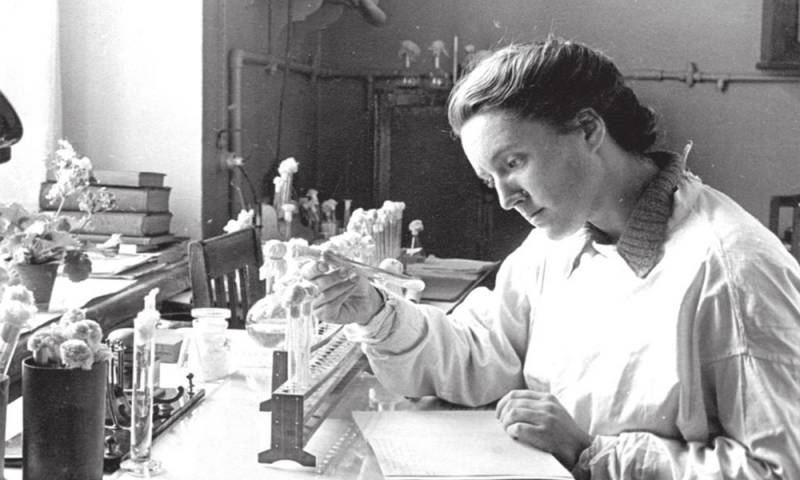
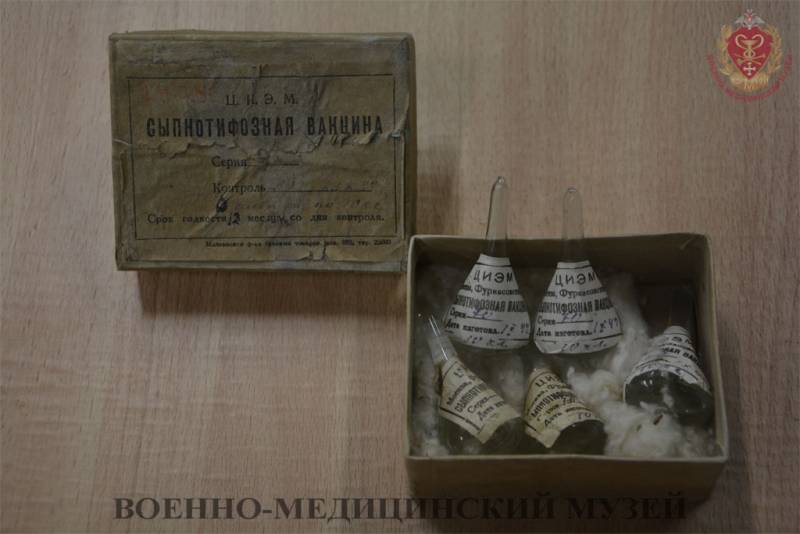
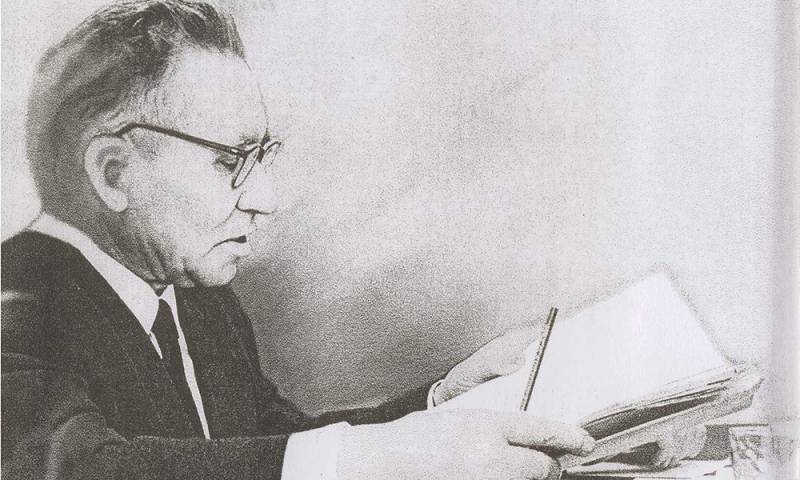
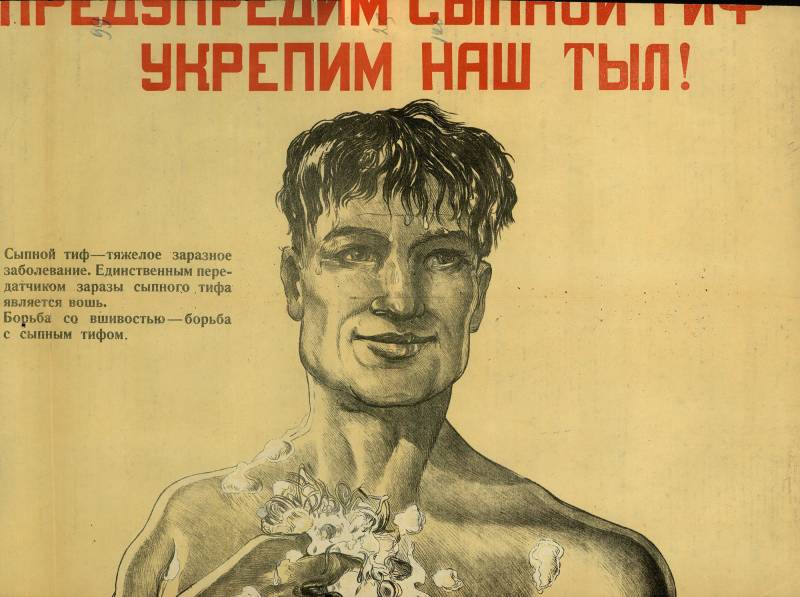
Information